From inside (document excerpt):
User and Operator’s Manual for 2008 Hyundai Santa Fe. Engine:
- 2.7 L 6-Cylinder, V-type DOHC
- 3.3 L 6-Cylinder, V-type DOHC
Free PDF Auto Service and Owner’s Manual Download.
Table of contents
Features of your Hyundai
Driving your Hyundai
What to do in an emergency corrosion prevention & appearance care
Section
Vehicle maintenance requirements
Do-it-yourself maintenance
Emission control systems
Consumer information, reporting safety defects & binding arbitration of warranty claims vehicle specifications
INDEX
INSTRUMENTS AND CONTROLS
1. Steering Wheel. 1-118
2. Horn and Driver’s Air bag. 1-119, 1-44
3. Instrument Cluster. 1-62
4. Ignition Switch. 1-7
5. Hazard Warning Switch. 1-83
6. Front Window Defroster Switch. 1-141
7. Digital Clock. 1-84
8. Rear Window Defroster Switch (If installed). 1-83
9. Passenger Air bag Off Indicator. 1-52
10. Rear Air Conditioning Switch (If installed). 1-141
11. Passenger’s Air bag. 1-51
12. Multi-Function Light Switch. 1-75
13. Hood Release Lever. 1-115 14. Parking Brake Pedal (If installed). 1-108 15. Windshield Wiper/Washer Switch. 1-78 16. Heating/Air Conditioning Control Panel. 1-125 17. Cigarette Lighter. 1-85 18. Center Console Box. 1-96 19. Shift Lever (If installed). 2-10 20. Power Outlet. 1-86 21. Ashtray. 1-85 22. Glove Box. 1-95 23. Audio System (If installed). 1-147
YOUR VEHICLE AT A GLANCE
INDICATOR SYMBOLS ON THE INSTRUMENT CLUSTER
Turn Signal Indicator Lights Malfunction Indicator Light
ABS Service Reminder Indicator
Electronic Stability Control (ESC) Indicator Lights
High Beam Indicator Light
Cruise Indicator Light
Cruise SET Indicator Light
AWD System Warning Light
Low Oil Pressure Warning Light AWD Lock Indicator Light
Parking Brake/Brake Fluid Level Warning Light Immobilizer Warning Light (If Installed)
Charging System Warning Light Low Windshield Washer Fluid Level Warning Light
Door Ajar Warning Light Seat Belt Warning Light
Tail Gate Open Warning Light
Low Fuel Level Warning Light
TPMS (Tire pressure monitoring system) malfunction indicator
Low tire pressure telltale
SRS (Air bag) Service Reminder Indicator (SRI) Low tire pressure position telltale
FEATURES OF YOUR HYUNDAI
Fuel Recommendations. 1-21Breaking in Your New Hyundai. 1-3
Keys. 1-3
Door. 1-7
Power Windows. 1-14
Seats. 1-16
Seat Belts. 1-27
Child Restraint System. 1-33
Supplemental Restraint (AIR BAG) system. 1-44
Instrument Cluster and Indicator Lights. 1-62
Warning and Indicator Lights. 1-64
Multi-Function Light Switch. 1-75
Windshield Wiper and Washer Switch. 1-78 1Sunroof. 1-89
Mirror. 1-97
Luggage Compartment. 1-109
Hood Release. 1-115
Cruise Control. 1-120
Heating and Cooling Control. 1-125
Antenna. 1-142
Stereo Sound System. 1-144
Audio System. 1-147
INDEX
A
AC Inverter. 1-87
Air bag. 1-44
Air Cleaner Filter. 6-16
Air Conditioning
Care. 6-15
Operation. 1-132, 6-15
Switch. 1-132
Antenna. 1-142
Ashtray. 1-85
Audio System
Identifying your audio system. 1-147
Controlling how your audio system sounds. 1-148
Using general controls. 1-151
Using FM/AM tuner controls. 1-156
Using CD Player controls. 1-159
Playing CDS, MP3 and WMA discs. 1-162
Using XM controls. 1-168
Using external controls. 1-175
Using Rear Seat Entertainment(RSE) system controls. 1-172
Rear Seat Entertainment(RSE) system. 1-178
RSE control panel operation. 1-185
Using the satellite radio. 1-193
Using the remote controller. 1-196
AWD Lock System. 2-20
B
Battery. 6-20
Binding Arbitration. 8-18
Brake
Anti-lock brake system. 2-15 Electronic stability control (ESC) system. 2-15 Checking the brakes. 6-14 Fluid. 6-14 Practices. 2-21 Breaking-In your New Hyundai. 1-3 Bulb Replacement. 6-24
C
California Perchlorate Notice. 5-10
Care of Disc. 1-146
Catalytic Converter. 7-3
Child-Protector Rear Door Lock. 1-9
Child Restraint System. 1-33
Installing a Child Restraint Seat with the
“Tether Anchorage” System. 1-35
Securing the Child Restraint Seat with the “LATCH” System. 1-37
Cigarette Lighter. 1-85
Clock. 1-84
Combination Light
Auto light. 1-77
Headlight flasher. 1-77
Headlight switch. 1-76
High-beam switch. 1-76
Lane change signal. 1-75
Parking light auto off. 1-76
Turn signal operation. 1-75
Consumer Information. 8-15
Conversation mirror. 1-95
Cooling Fans. 6-22
Corrosion protection
Cleaning the interior. 4-5 Protecting your Hyundai from corrosion. 4-2 Washing and waxing. 4-4 Cruise Control. 1-120
D
Defrosting / Defogging. 1-133 Door
Central door lock. 1-9
Door locks. 1-7
Front door edge warning light. 1-119
Drink Holder. 1-88
Driving
Driving for economy. 2-23
Smooth cornering. 2-24
Winter driving. 2-24
E
Emission Control System. 7-2 Engine
Before starting the engine. 2-4
Compartment. 6-2
Coolant. 6-7
Coolant temperature gauge. 1-70
If the engine overheats. 3-4
Number. 8-2
Oil. 6-5
Starting. 2-6
Engine Exhaust Can Be Dangerous. 2-2
F
Fan Speed Control. 1-126
Floor Mat Anchor. 1-116
Fog Light
Front. 1-83
Front Seats
Adjustable front seats. 1-16
Adjustable headrests. 1-18
Adjusting seat forward and rearward. 1-16
Adjusting seatback angle. 1-17
Fuel
Capacity. 9-2
Gauge. 1-70
Recommendations. 1-2
Fuel Filler Lid
Remote release. 1-113
Full-time AWD Operation. 2-17
Fuses. 6-17
Fuse panel description. 6-32
G
General Checks. 6-4
Glove Box. 1-95
H
Hazard Warning System. 1-83
Heating and Cooling Control. 1-125
Heating and Ventilation
Air flow control. 1-127
Air intake control switch. 1-126 Bi-level heating. 1-128 Defrosting / Defogging. 1-133 Fan speed control (Blower control). 1-126 Temperature control. 1-130 High-Mounted Rear Stop Light. 1-112 Hood Release. 1-115 Horn. 1-119
I
Ignition Switch. 2-5
Instrument Cluster and Indicator Lights. 1-62
Instrument Panel Light Control (Rheostat). 1-84
Interior Light. 1-93
J
Jump Starting. 3-3
M
Maintenance Intervals
Explanation of scheduled maintenance items. 5-7 Maintenance under severe usage conditions. 5-6 Scheduled maintenance. 5-4 Service requirements. 5-2
Mirrors
Automatic Dimming Rear View Mirror With Compass. 1-100 Day-night inside rearview mirror. 1-99 Homelink mirror. 1-102 Outside rearview mirror. 1-97 Outside rearview mirror Heater. 1-98
O
Odometer / Trip Odometer. 1-71
Occupant Classification System. 1-52
K
Keys. 1-3
If you lose your keys. 3-21
Positions. 2-5
P
Parking Brake. 1-108
Power Outlet. 1-86
Power Steering Fluid Level. 6-23
L
Light Bulbs Replacement. 6-24
Luggage Compartment. 1-109
Cargo security screen. 1-109
Luggage Net. 1-110
Luggage under tray. 1-111
R
Rear Seat
Adjusting seatback angle. 1-22 Folding rear seatback. 1-23
Rear Window Defroster Switch. 1-88
Reporting Safety Defects. 8-17
Risk of Rollover. 2-3
Roof Rack. 1-111
S
Seat
Front. 1-16 Rear. 1-22 Seat warmer. 1-22
Seat Belts
3-point system. 1-31 Pretensioner seat belt. 1-41 Adjusting your seat belt. 1-30 Care of seat belts. 1-29 Precautions. 1-27
Shop Manual. 8-14
Sound
Brake pad warning sound. 1-69
Speedometer. 1-71
Starting Procedure. 2-7
Steering Wheel Tilt Lever. 1-118
Stereo Sound System. 1-144
Sunglass Holder. 1-95
Sunroof. 1-89
Sun Visor. 1-116
T
Tachometer. 1-71
Tail Gate. 1-109
Theft-Alarm System. 1-11
Ticket Holder. 1-118
Tires
Aging. 8-13
Balancing. 8-12
Chains. 8-10 Changing a flat tire. 3-12 If you have a flat tire. 3-12 Information. 8-3 Maintenance. 8-13 Pressure. 8-3 Replacement. 8-12 Rotation. 8-11 Sidewall Labeling. 8-6 Snow tires. 8-10 Spare tire. 3-10 Terminology and Definition. 8-8 Tire Pressure Monitoring System (TPMS). 3-5 Traction. 8-12 Towing
A trailer (or vehicle). 2-27 Emergency. 3-20 If your car must be towed. 3-18 Trailer Connector. 2-31 Transaxle
Automatic. 2-10 Automatic transaxle fluid checking. 6-12 Manual. 2-7 Manual transaxle oil checking. 6-11 Trip Computer. 1-73
V
Vehicle Identification Number. 8-2
Vechcle Load Limit. 2-32
Vehicle Specifications
Engine. 9-3 Lubrication chart. 9-4 Dimensions. 9-2
W
Warning and Indicator Lights. 1-64 Windows
Power. 1-15
Windshield Wiper and Washer. 1-78
Rear Window wiper and washer switch. 1-82
Windshield Wiper Blade De-icer. 1-84
Windshield Wiper Blades. 6-9
Winter Driving. 2-24
Wikipedia’s page for Hyundai Santa Fe
Publisher: Hyundai Motor America


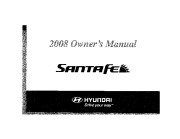 2008 Hyundai Santa Fe Owners Manual, 2008 - 1 of 355
2008 Hyundai Santa Fe Owners Manual, 2008 - 1 of 355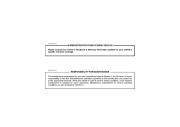 2008 Hyundai Santa Fe Owners Manual, 2008 - 2 of 355
2008 Hyundai Santa Fe Owners Manual, 2008 - 2 of 355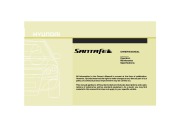 2008 Hyundai Santa Fe Owners Manual, 2008 - 3 of 355
2008 Hyundai Santa Fe Owners Manual, 2008 - 3 of 355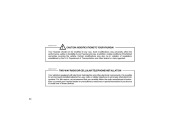 2008 Hyundai Santa Fe Owners Manual, 2008 - 4 of 355
2008 Hyundai Santa Fe Owners Manual, 2008 - 4 of 355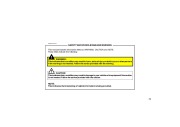 2008 Hyundai Santa Fe Owners Manual, 2008 - 5 of 355
2008 Hyundai Santa Fe Owners Manual, 2008 - 5 of 355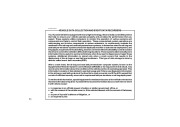 2008 Hyundai Santa Fe Owners Manual, 2008 - 6 of 355
2008 Hyundai Santa Fe Owners Manual, 2008 - 6 of 355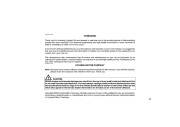 2008 Hyundai Santa Fe Owners Manual, 2008 - 7 of 355
2008 Hyundai Santa Fe Owners Manual, 2008 - 7 of 355 2008 Hyundai Santa Fe Owners Manual, 2008 - 8 of 355
2008 Hyundai Santa Fe Owners Manual, 2008 - 8 of 355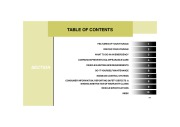 2008 Hyundai Santa Fe Owners Manual, 2008 - 9 of 355
2008 Hyundai Santa Fe Owners Manual, 2008 - 9 of 355 2008 Hyundai Santa Fe Owners Manual, 2008 - 10 of 355
2008 Hyundai Santa Fe Owners Manual, 2008 - 10 of 355